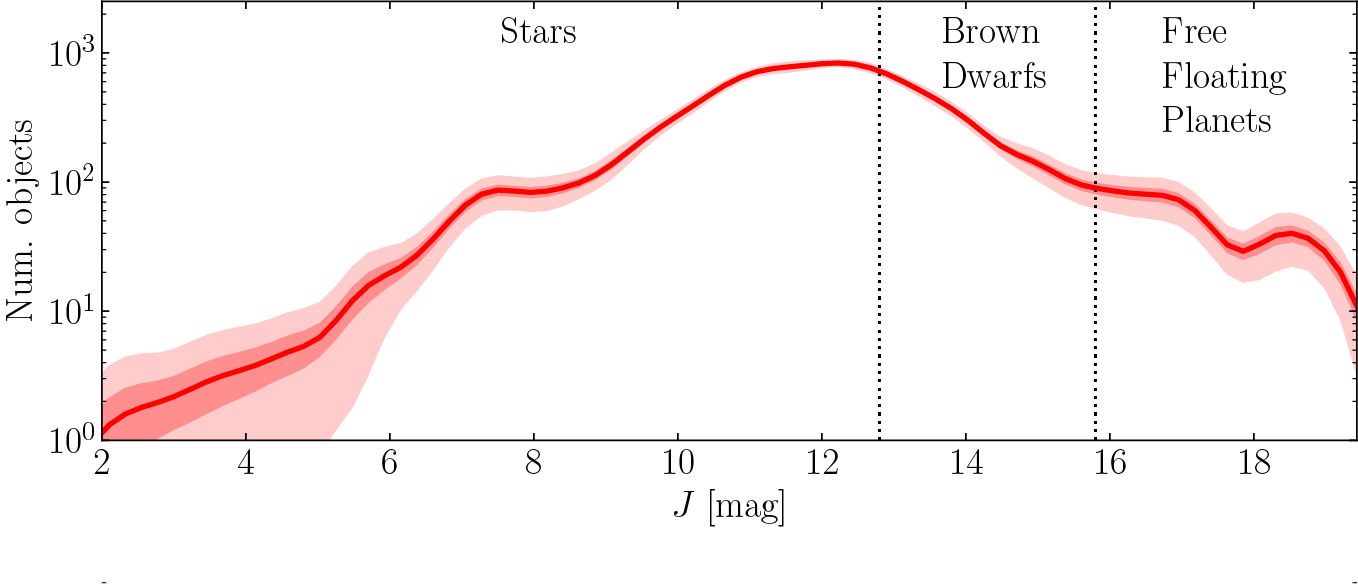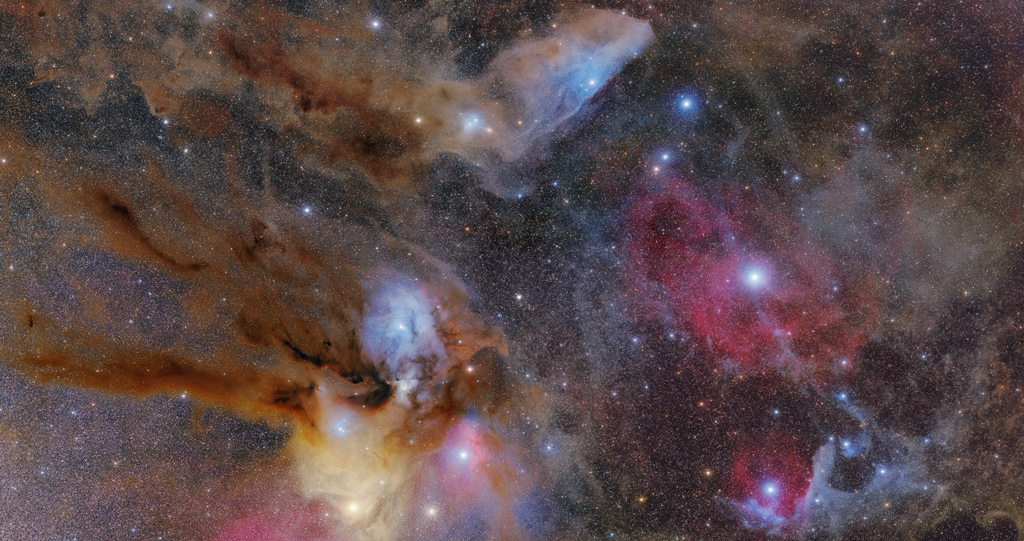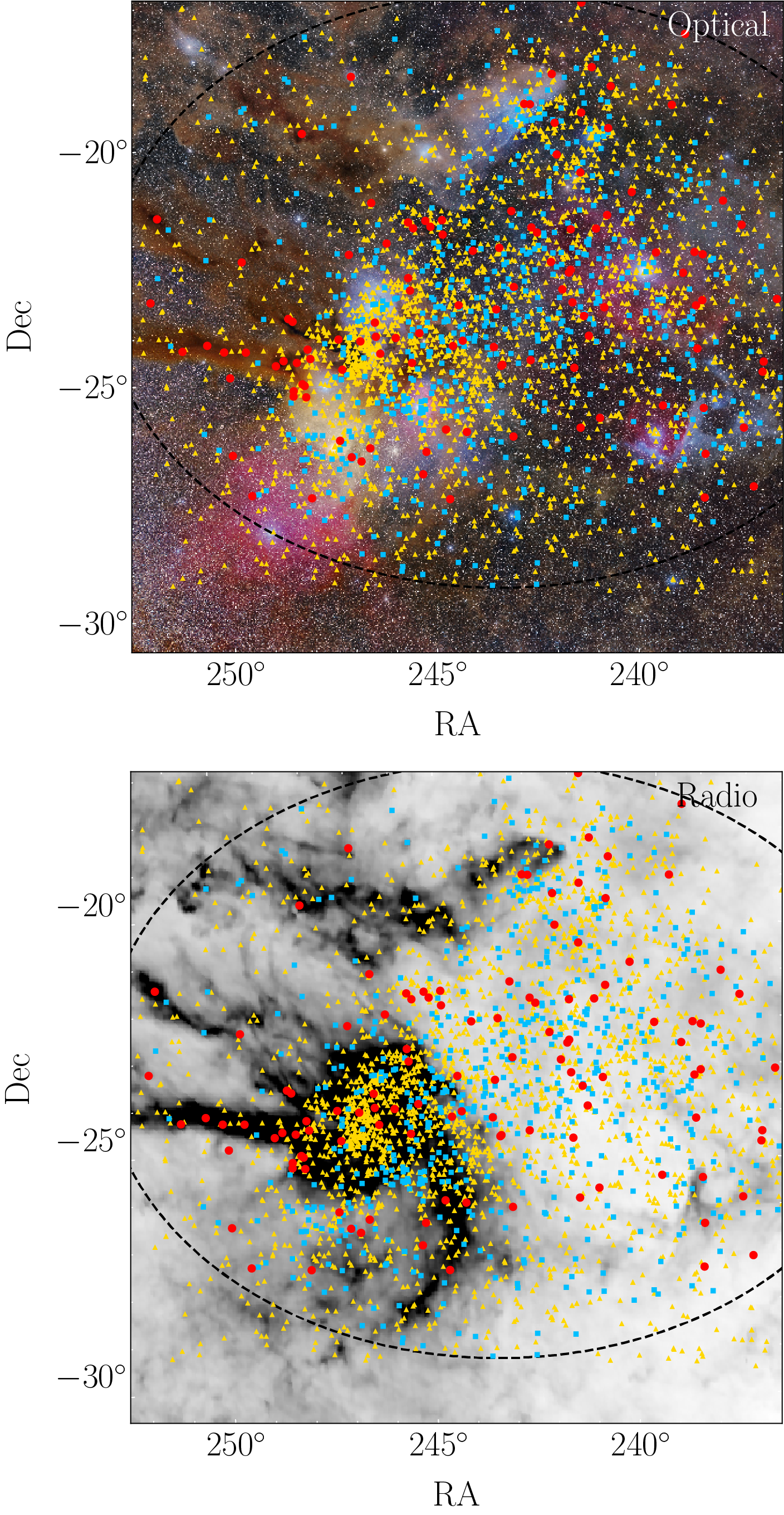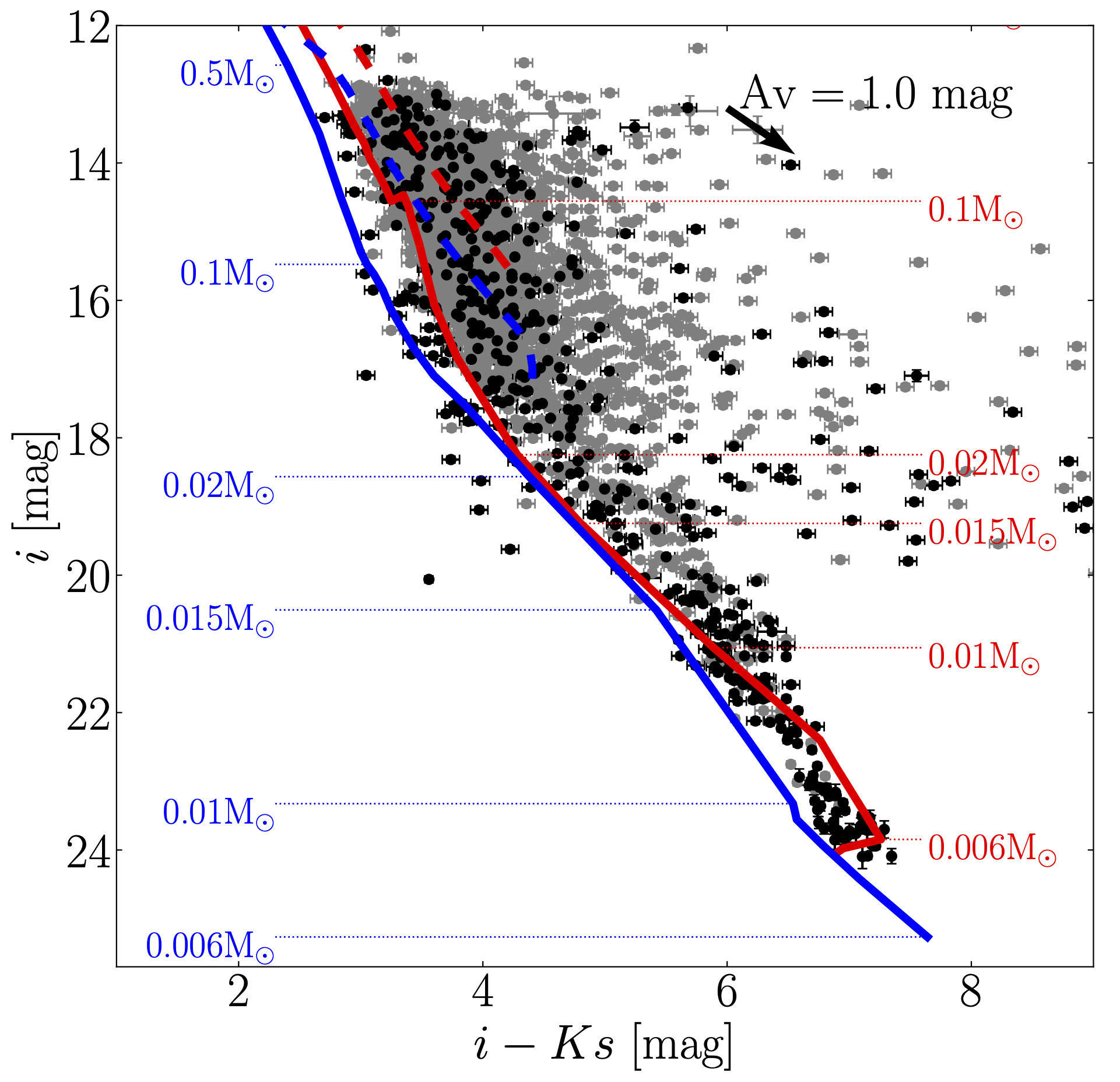Our observations of one of the closest star-forming regions revealed the largest population of free floating planets discovered to date. These planets do not orbit stars but freely roam the Galaxy, and this sample constitutes a benchmark to investigate how stars and planets form.
The nature and origin of free-floating planets (FFPs) remains unconstrained: do they form like stars through the gravitational collapse of small clouds of gas? Or do they form like planets around stars and are then dynamically ejected or stripped off? While it is known that both mechanisms can produce FFPs, their respective contributions are still an open question due to the lack of a large homogeneous sample.
Identifying free-floating planets within a star cluster is a major challenge in many ways similar to the “needle in the haystack” parable. First, one needs eyes sensitive enough to detect the “needles”. While stars are relatively bright and easy to spot, the planetary mass members are several thousand times fainter and can only be detected with large aperture telescopes and sensitive detectors. Second, one must identify the rare planetary mass members (the “needles”, typically a few hundreds) within the overwhelming multitude of field stars and background galaxies (the “haystack”, millions of interlopers).
To solve this challenge, we combined the treasure chest of images available in the public astronomical archives with new deep wide-field observations obtained with the best infrared and optical telescopes in the world to measure the tiny motions, colours and luminosities of tens of millions of sources in a large area of the sky hosting the Upper Scorpius OB young stellar association. Combining proper motions (i.e., motions across the plane of the sky) and multi-wavelength photometry is indeed the most efficient and robust way to identify all the members of an association over very large areas. Each member of an association was born from the same molecular cloud complex with its own original momentum. At the end of the formation process, the group members move together with space motions similar to the parent cloud complex, making an extremely effective method of identification. Unrelated field stars have indeed almost random proper motions while background galaxies have no measurable proper motion. Any object displaying a proper motion similar to the group is therefore most likely a member. Luminosities and colours can then be used to refine the selection and reject the few remaining interlopers.
Using over 80000 wide field images adding up to ~100TB and spanning 20 years, we have identified up to 170 FFPs members of the Upper Scorpius association among the vast amount of background stars and galaxies. This is by far the largest sample of FFPs observed directly in a single association, and almost doubles the number of FFPs imaged to date over the entire sky. This number clearly exceeds the number of FFPs expected if FFPs form like stars from the collapse of a small molecular cloud, indicating that other mechanisms must be at play. From the current knowledge of exoplanetary systems (frequency, configuration, dynamics), we estimate that dynamical ejection from planetary systems is an important mechanism of FFP formation.
 Luminosity Function in the J-band of all the sources identified in our survey. The stella, brown dwarf and planetary mass regimes are indicated.
Luminosity Function in the J-band of all the sources identified in our survey. The stella, brown dwarf and planetary mass regimes are indicated.
The discovery of this large population of young FFPs also bears important implications on the formation and early evolution of planetary systems and, specifically, on the timescale of the processes involved. Our observations suggest that giant planet systems must form and become dynamically unstable within the observed lifetime of the region of 3-10 Myr to contribute to the population of FFPs. Current studies suggest that the instability among the giant planets in our Solar System may also have occurred at early times, although it was much less violent than the instability needed to eject planets as massive as the ones we have found.
The FFPs that we identified are also excellent targets for follow-up studies. For instance, to study planetary atmospheres in the absence of a blinding host star which would be interesting to compare with atmospheres of planets orbiting stars. Additionally, studying the binary and disc properties of these objects will shed more light on their formation process.
Assuming the fraction of FFPs that we measured in Upper Scorpius is similar to that of other star forming regions, there could be several billions of Jupiters roaming the Milky Way without a host star! This number would be even greater for Earth-mass planets since they are known to be more common than massive planets.
The animation above was produced by Teun van der Zalm of Salmonick Production and can also be watched in 4K on Youtube.


